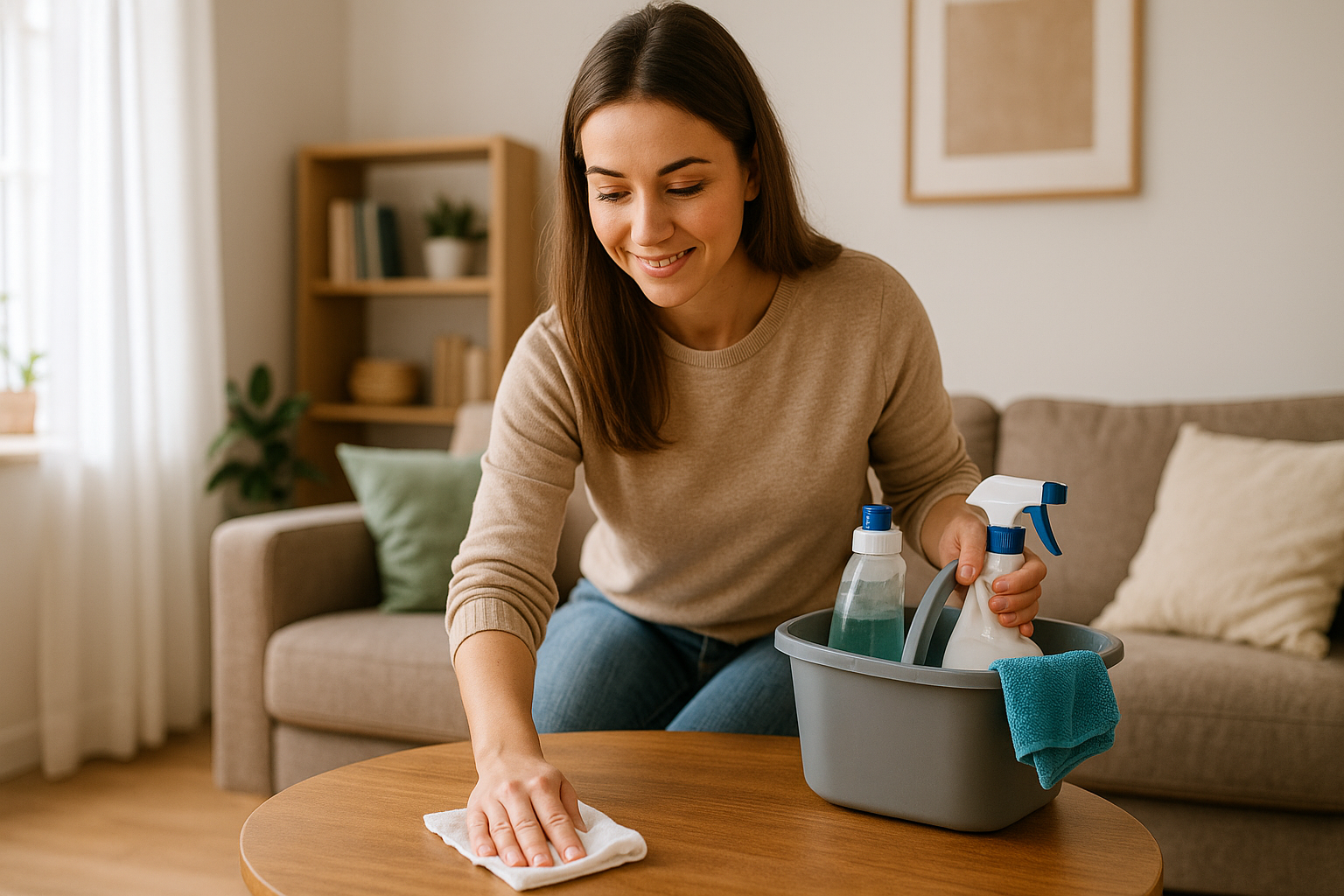A tidy home doesn’t always mean a perfectly clean one—it means a space that feels calm, functional, and welcoming.
While deep cleaning is necessary now and then, maintaining a tidy home every day can be simple, fast, and sustainable if you use a 10-minute daily reset routine.
This method is perfect for busy households, parents, couples, or individuals who want order without spending hours cleaning.
In this article, you’ll learn how to implement a 10-minute reset routine that keeps your home in check, reduces stress, and prevents clutter from piling up.
Why 10 Minutes Is All You Need
You may think 10 minutes can’t make a difference—but it absolutely can. The purpose of a daily reset is to create a habit, not perfection. Done consistently, this short burst of effort adds up and makes deep cleaning easier later.
Benefits of a 10-minute routine:
- Reduces daily clutter
- Keeps high-traffic areas clean
- Prevents overwhelm from mess buildup
- Helps you stay on top of laundry, dishes, and surfaces
- Encourages the entire household to participate
Best of all, it’s easy to fit into your schedule, whether you work full-time, have children, or live alone.
Choose the Right Time for Your Reset
The key to building a habit is consistency. Choose a time each day to do your reset routine:
- Morning: right after breakfast
- Afternoon: before school pickup or evening prep
- Night: after dinner or before bed
Many people prefer the evening because it helps them wake up to a tidy home. Others prefer the morning to start the day with momentum. Choose what works best for your lifestyle and energy levels.
Focus on High-Impact Zones
To make the most of your 10 minutes, focus on areas that get messy the fastest or affect your mood the most.
Priority zones include:
- Kitchen counters and sink
- Living room (pillows, remotes, toys)
- Entryway (shoes, bags, keys)
- Bathroom surfaces
- Dining table
- Laundry hotspots
These are the spaces you see and use daily, so tidying them has a big impact on how your home feels.
Keep a Reset Basket or Tray
Having a dedicated basket or tray for your reset routine is a game changer. It might include:
- A microfiber cloth
- All-purpose cleaner
- Trash bag or bin
- Small laundry basket
- A place to gather “out of place” items
This basket travels with you during the reset, making it easier to grab and go. It also reduces excuses because everything you need is already prepared.
Break It Down by Minute
To maximize your 10 minutes, try this simple structure:
Minute 1–2: Trash and recycling sweep
Walk through the main areas and toss anything that belongs in the trash or recycling bin. Think wrappers, receipts, junk mail, broken toys, or expired coupons.
Minute 3–4: Clear surfaces
Put away items that don’t belong on counters, tables, or sofas. Fold blankets, stack books, and return remote controls or chargers to their homes.
Minute 5–6: Quick dishes or sink reset
If dishes are in the sink, load them into the dishwasher or hand wash a few essentials. Wipe down the sink afterward.
Minute 7–8: Reset laundry areas
Pick up dirty clothes, toss them in a basket or washer. If clean laundry is sitting around, fold a few key pieces or place them in a neat pile for later.
Minute 9–10: Final surface wipe-down
Wipe high-touch areas like kitchen counters, the bathroom sink, or the dining table.
Adjust this structure depending on your home’s specific needs.
Involve the Whole Household
Don’t try to do it all alone. A 10-minute reset is perfect for group participation. Assign each person a zone or let them handle their own belongings.
Make it fun:
- Set a timer and race to finish
- Play music
- Offer a small reward (like choosing the family movie)
Even toddlers can help by putting toys in a bin or placing shoes by the door.
Keep the Routine Simple
One reason this routine works is because it’s simple. Avoid overcomplicating it.
Tips to stay consistent:
- Use the same order each day
- Keep tools accessible
- Don’t aim for perfection—just improvement
- Don’t multitask—focus for 10 minutes, then stop
Once it becomes a habit, you’ll do it automatically.
Track Your Progress
Tracking builds accountability and satisfaction. Use a small notebook, wall calendar, or habit app to mark each day you complete your reset.
Seeing a streak of completed days builds momentum and helps the routine stick long-term.
Troubleshoot Common Challenges
Struggling to make it work? Here’s how to troubleshoot:
- No time? Set a timer for just 5 minutes. Something is better than nothing.
- Too tired? Pick one zone only—like just the kitchen or bathroom.
- Kids resist? Let them choose their task or use a star chart system.
- Partner not helping? Share this article and try doing it together for just one week. Results speak louder than words.
What You’ll Notice Over Time
After a few days of consistent resets, your home will feel noticeably lighter. Over time:
- You’ll spend less time cleaning overall
- You’ll feel more relaxed in your space
- Guests won’t require a panic clean
- You’ll start putting things away automatically
It’s not just about tidiness—it’s about reclaiming peace and control in your environment.
Final Thoughts: Reset, Recharge, Repeat
A 10-minute daily reset is a small but mighty habit. It brings order to your home, calm to your mind, and structure to your routines.
No matter how messy your space feels today, this method gives you a clear path forward—10 minutes at a time.
You don’t need more time. You need a routine that works. And this one does.

Marcela Silva is passionate about home organization, creative budgeting, and practical everyday solutions. With a sharp eye for the small details that make a big difference, Marcela shares accessible and effective tips to help people keep their homes more functional, clean, and welcoming. Her content is designed for those who seek practicality without sacrificing comfort and well-being, offering realistic suggestions that are easy to apply in daily life.
